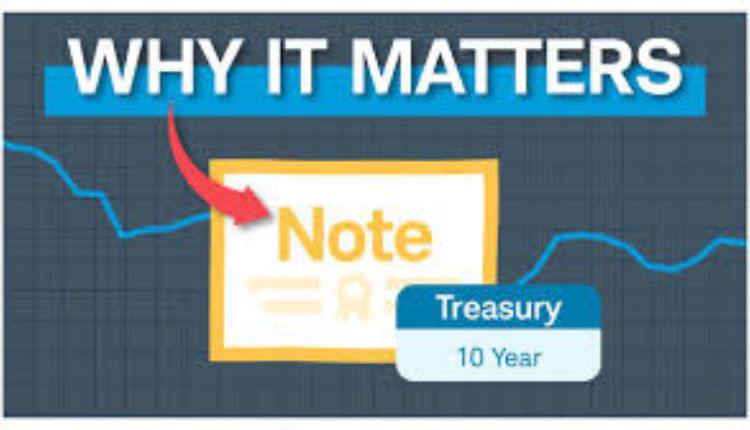Introduction:
The 10-year Treasury yield is a key indicator that influences various aspects of the global financial market. It serves as a benchmark for interest rates and reflects investor sentiment towards the economy. In this article, we will delve into the significance of the 10-year Treasury yield, its determinants, and its implications for investors and the broader financial landscape.
Body:
- What is the 10-Year Treasury Yield? The 10-year Treasury yield refers to the annual return on investment of U.S. government bonds with a maturity of 10 years. It represents the interest rate at which the government borrows money from investors. This rate is closely monitored by investors, policymakers, and economists due to its impact on borrowing costs, mortgage rates, and investment decisions.
II. Factors Influencing the 10-Year Treasury Yield:
- Economic Outlook: The state of the economy plays a vital role in determining the 10-year Treasury yield. During periods of economic growth and low unemployment, investors demand higher yields to compensate for potential inflation and to reflect the positive economic conditions. Conversely, during economic downturns or uncertainty, investors seek the safety of government bonds, driving down the yield.
- Monetary Policy: The Federal Reserve’s monetary policy decisions significantly impact the 10-year Treasury yield. When the Fed pursues expansionary monetary policies, such as lowering interest rates or implementing quantitative easing, it aims to stimulate borrowing and spending, which can lower the yield. Conversely, contractionary monetary policies can lead to higher yields as borrowing becomes more expensive.
- Inflation Expectations: Inflation expectations have a profound effect on the 10-year Treasury yield. Higher inflation expectations erode the purchasing power of fixed-income investments, leading investors to demand higher yields to compensate for the loss in value over time. Conversely, lower inflation expectations can result in lower yields as investors are willing to accept lower returns.
III. Implications for Investors:
- Bond Prices and Yields: The relationship between bond prices and yields is inversely proportional. When the 10-year Treasury yield rises, bond prices fall, and vice versa. This is because existing bonds with lower yields become less attractive, leading to a decrease in their market value.
- Mortgage Rates: The 10-year Treasury yield serves as a reference for setting mortgage rates. As the yield rises, banks and lenders increase mortgage rates to maintain their profitability and compensate for the higher borrowing costs. Conversely, a decrease in the yield may lead to lower mortgage rates, making homeownership more affordable.
- Stock Market Performance: The 10-year Treasury yield also influences the stock market. As the yield rises, fixed-income investments become more attractive, potentially leading investors to shift their funds from stocks to bonds. This can result in a decrease in stock prices. Conversely, a decrease in the yield may encourage investors to move funds from bonds to stocks, potentially boosting stock prices.
Conclusion:
The 10-year Treasury yield is a crucial financial indicator that reflects the state of the economy and influences various sectors. Its movements are impacted by factors such as economic conditions, monetary policy decisions, and inflation expectations. Investors need to closely monitor the yield as it affects bond prices, mortgage rates, and stock market performance. By understanding the dynamics of the 10-year Treasury yield, investors can make informed decisions and navigate the ever-changing financial landscape.
FAQs:
How does the 10-year Treasury yield affect mortgage rates? The 10-year Treasury yield serves as a benchmark for setting mortgage rates. When the yield increases, banks and lenders tend to raise mortgage rates to compensate for the higher borrowing costs. Conversely, a decrease in the yield may lead to lower mortgage rates, making it more affordable for individuals to obtain home loans.
